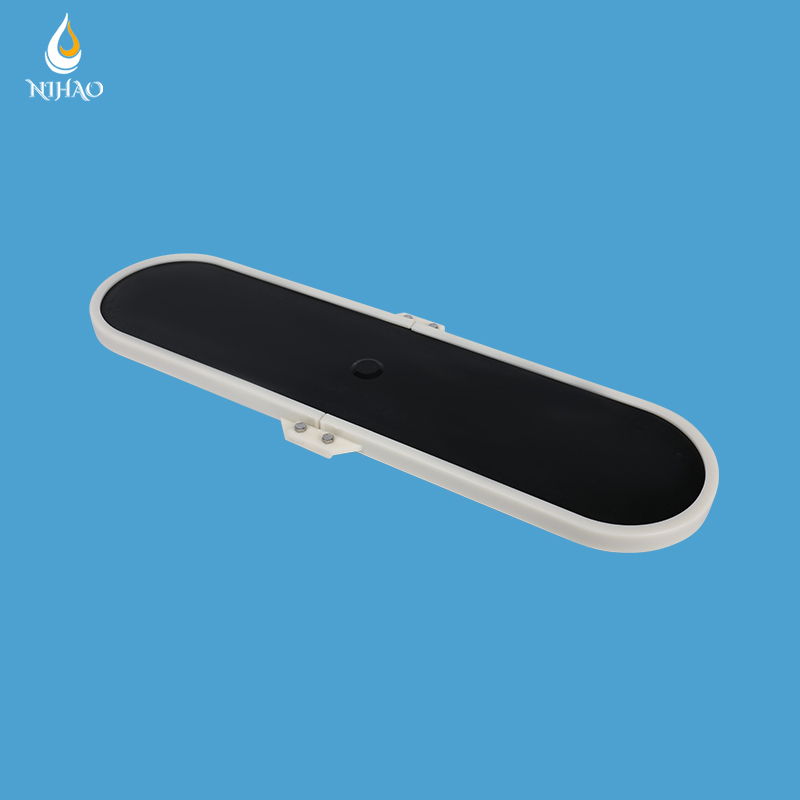 +86-15267462807
+86-15267462807
Imagine a flat plate made of durable plastic or rubber, riddled with tiny pores. That's essentially a plate diffuser. Air is pumped through these pores, creating a cascade of fine or coarse bubbles depending on the design. As these bubbles rise through the water column, they significantly increase the surface area for oxygen transfer, invigorating your water treatment process.

Activated Sludge Processes: In wastewater treatment, plate diffusers are instrumental in supplying oxygen to aerobic bacteria that break down organic matter in the activated sludge process. Their efficient oxygen transfer and even mixing capabilities make them ideal for this application.
Aquaculture Systems: Plate diffusers provide a reliable and efficient method for oxygenating aquaculture ponds and tanks, promoting optimal growth and survival rates.
Denitrification Processes: Denitrification is a biological process that removes nitrates from water. Plate diffusers ensure adequate oxygen levels are present at the beginning of the process, facilitating the conversion of nitrates to harmless nitrogen gas.
Lagoon Aeration: For lagoons used in wastewater treatment, plate diffusers offer a cost-effective and energy-efficient solution for oxygenation. Their ability to handle deeper water depths makes them well-suited for lagoon applications.
Enhanced Oxygen Transfer: Compared to traditional methods, plate diffusers produce smaller bubbles with a larger surface area, maximizing oxygen absorption by the water.
Energy Efficiency: Certain plate diffuser designs, particularly fine bubble diffusers, require less air pressure to operate, translating to lower energy consumption.
Uniform Mixing: The even distribution of bubbles throughout the water tank ensures consistent treatment across the entire volume.
Reduced Maintenance: Plate diffusers are known for their clog-resistant design, minimizing the need for frequent cleaning and maintenance.
Durable Construction: Made from high-quality materials, plate diffusers can withstand harsh environments and offer a long lifespan.
Plate diffusers come in two primary varieties: fine bubble and coarse bubble. Here's a quick breakdown to help you choose the right fit:
Fine Bubble Diffusers: These generate a multitude of tiny bubbles, leading to superior oxygen transfer efficiency. However, they do require a bit more air pressure to function.
Coarse Bubble Diffusers: These produce larger bubbles that require less air pressure. While their oxygen transfer rate is lower, they can be a good option for deeper tanks or applications where energy consumption is a prime concern.
| Feature | EPDM | Silicone |
| Durability | Excellent | Very Good |
| Affordability | More Affordable | More Expensive |
| Chemical Compatibility | Wide Range | Good |
| Temperature Tolerance | Moderate | High |
| Flexibility | Good | Excellent |
| Water Absorption | Low | Some Absorption |
For most water treatment applications, EPDM's affordability, durability, and broad chemical compatibility make it a compelling choice.
If high temperatures are a concern, or if flexibility is crucial for your system's design, then silicone becomes the preferred option.
Nihao fine bubble plate diffuser membrane material can be made of EPDM Or Silicone.
How long do plate diffusers typically last? With proper maintenance, plate diffusers can last for several years.
How do I clean a plate diffuser? The cleaning method depends on the specific diffuser model. Generally, a periodic soak in a mild cleaning solution or a light backwash can remove any accumulated debris. Refer to the manufacturer's instructions for detailed cleaning procedures.
What factors should I consider when choosing a plate diffuser? Consider the desired oxygen transfer rate, tank depth, available air pressure, and compatibility with your existing system components.
By incorporating plate diffusers into your water treatment regime, you're not just introducing oxygen, you're infusing your system with efficiency, reliability, and a path to optimal water treatment results.